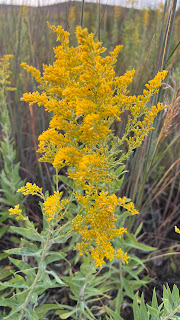It was a beautiful brightly sunny Monday morning yesterday, when, under governmentally-mandated biannual fiat, I awoke once again at an ungodly hour, forcing myself to fitfully wait until the un-Daylight-Savings-time moment came to actually get out of bed and go downstairs and exercise. Sleep-deprived, of course, even though I fell asleep Sunday night at 9 p.m., the usual diurnal bedtime of my internal clock if not now that of my bedside clock. Properly limbered up after biking (or, as it is now called "spinning"), shaved, showered, dressed and fed, I went forward into the blinding sunlight to face anew the increased risks of heart attack, stroke, and vehicular accident that kills extra hundreds of Americans in the week after each first Sunday of November.
It's the Children that I worry for most on these time change weeks, the collective, capitalized and cherished Children, who, walking to school, must risk a brush with eternity and my Jeep each day as, stricken by the morning sun, I drive oh-so-carefully to work. You see, my drive to work in the mornings is directly to the east, near the walking paths to school, and in the evening directly to the west, so I'm treated by the time change to not two such periods yearly, but four, doubling up with a sun who just last week wasn't quite awake when I went to work but now blares again into my face for a few more weeks. I'll do it all over again in reverse next Spring. And each time the time changes, the Children are at risk. |
| Red Hawthorn (Crataegus crusgalli) |
And I also worry for the decrepit but hardy crew of morning joggers who poorly choose my gravel road as their path these days. Just around the bend, I come over a hill and then stare straight into the sun for a few moments. One day, someday, it's inevitable that I'll bounce a runner off into the grass alongside the road, no matter how carefully I drive, a dull thud and an "oomphf" heard from an unseen obstacle who shouldn't even be there. I shouldn't be there either but for the arbitrary and senseless control exerted by our witless governments on our every waking moment.
(These pictures, of course, have nothing to do with the Time Change, they're just more garden pornography that I wanted to share from my trip to the Amarillo Botanical Gardens.)
 |
| Cranes are good luck! |
 |
| I love a banana in flower! |




.jpg)
.jpg)
.jpg)
.jpg)
.jpg)
.jpg)
.jpg)
.jpg)
.jpg)
.jpg)
.jpg)
.jpg)
.JPG)
.jpg)
.jpg)
.jpg)
.jpg)
.jpg)
.jpg)



.jpg)

.jpg)
.jpg)

.jpg)
.jpg)
.jpg)
.jpg)
.jpg)
.jpg)
.jpg)
.jpg)
.jpg)
.jpg)
.jpg)
.jpg)
.jpg)
.jpg)
.jpg)
.jpg)
.jpg)